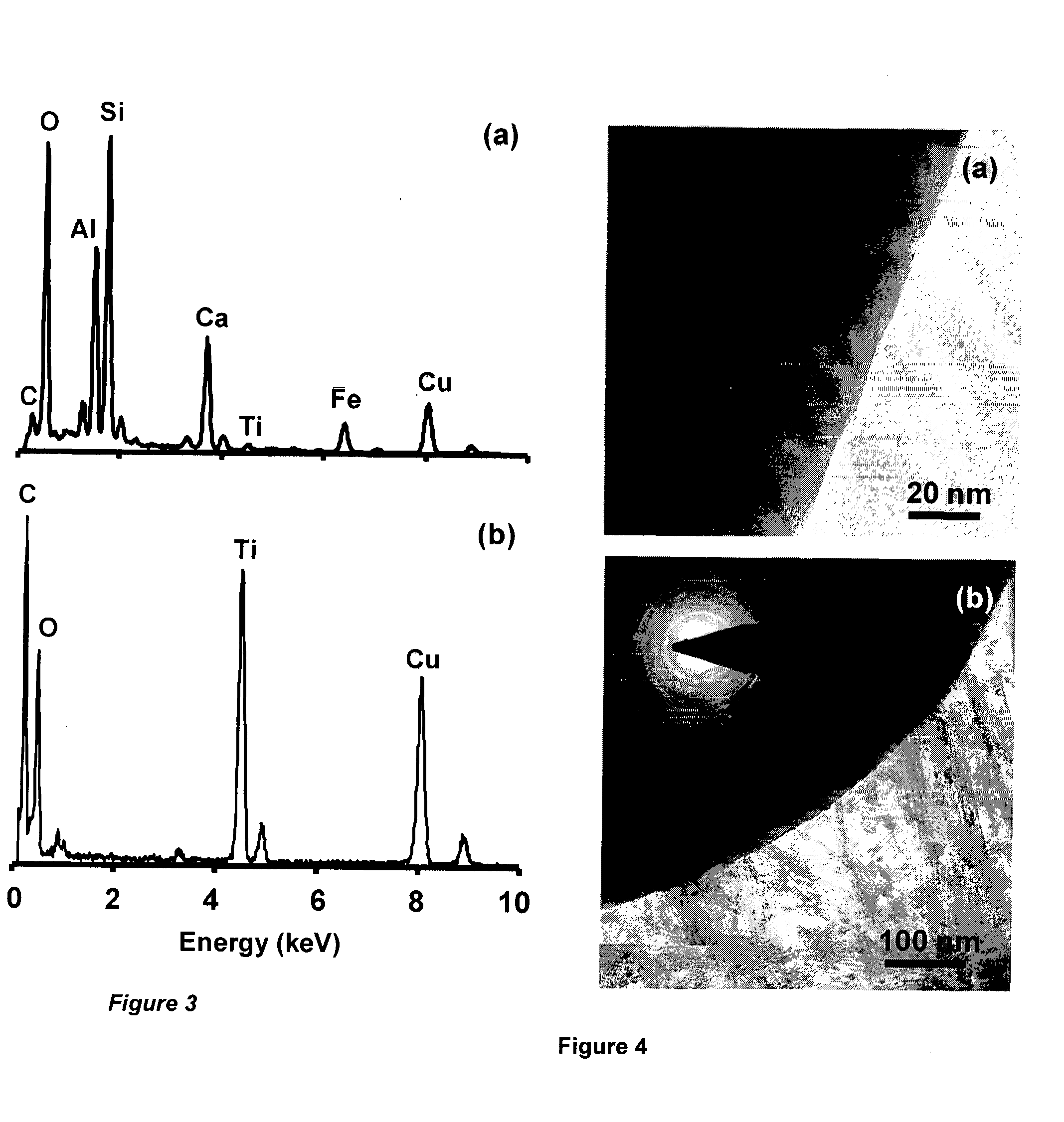Semiconductor-oxides nanotubes-based composite particles useful for dye-removal and process thereof
a technology of semiconductor oxide and composite particles, which is applied in the direction of ion-exchangers, other chemical processes, electric regeneration, etc., to achieve the effect of increasing the dye-adsorption capacity
- Summary
- Abstract
- Description
- Claims
- Application Information
AI Technical Summary
Benefits of technology
Problems solved by technology
Method used
Image
Examples
examples
[0126]The following examples are given by way of illustration therefore should not be construed to limit the scope of the invention.
example-1
[0127]In this example, HTN are processed via the conventional hydrothermal method. 3 g of as-received nanocrystalline anatase-TiO2 (Central Drug House (CDH) (P) Ltd., New Delhi, India) is suspended in a highly alkaline aqueous solution, containing 10 M NaOH (Assay 97%, S.D. Fine-Chem Ltd., Mumbai, India), filled up to 84 vol. % of a Teflon-beaker placed in a stainless-steel (SS 316) vessel of 200 ml capacity. The process is carried out with continuous stirring in an autoclave (Amar Equipment Pvt. Ltd., Mumbai, India) at 120° C. for 30 h under an autogenous pressure. The autoclave is allowed to cool naturally to room temperature and the hydrothermal product is separated by decanting the top solution. The initial product is subjected to typical washing-cycles with the first-cycle of washing conducted using 100 ml of 1 M HCl solution (35 wt. %, Qualigens Fine Chemicals, India) at 25° C. for 1 h followed by that using 100 ml of distilled-water for 1 h. The product obtained is then subje...
example-2
[0129]In this example, the values of different parameters used for the processing of micro-nano integrated HTN-flyash composite particles are identical with those already described in the Example 1 except for the following changes. The initial concentration of SnCl2 and its dissolution time are varied as 5, 20, 40, and 60 g·l−1 and 30 min, 2 and 4 h respectively. With these processing parameters, the HTN-flyash composite particles (non-magnetic) containing 44, 53, 69, and 77 wt. % Sn and 2, 3, 4, and 7 wt % HTN respectively (balance being the weight of flyash particles) are obtained for the complete dissolution of SnCl2 (dissolution time of 2 and 4 h).
[0130]The HTN-flyash composite particles processed under these conditions are utilized in the dye-adsorption experiments which are conducted at the neutral initial solution-pH of ˜7.5 and in the dark-condition using the MB (methylene blue) as a model catalytic dye-agent. 125 ml aqueous solution is prepared by dissolving 15 μM of MB dye...
PUM
 Login to View More
Login to View More Abstract
Description
Claims
Application Information
 Login to View More
Login to View More - R&D
- Intellectual Property
- Life Sciences
- Materials
- Tech Scout
- Unparalleled Data Quality
- Higher Quality Content
- 60% Fewer Hallucinations
Browse by: Latest US Patents, China's latest patents, Technical Efficacy Thesaurus, Application Domain, Technology Topic, Popular Technical Reports.
© 2025 PatSnap. All rights reserved.Legal|Privacy policy|Modern Slavery Act Transparency Statement|Sitemap|About US| Contact US: help@patsnap.com



